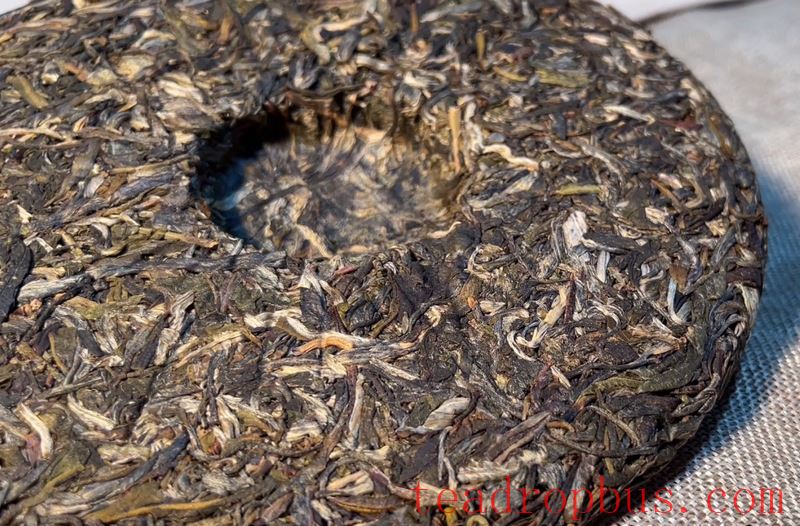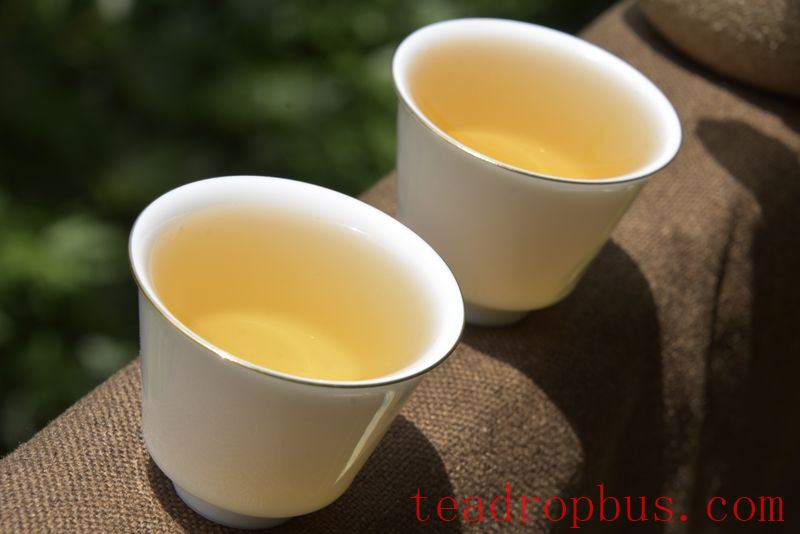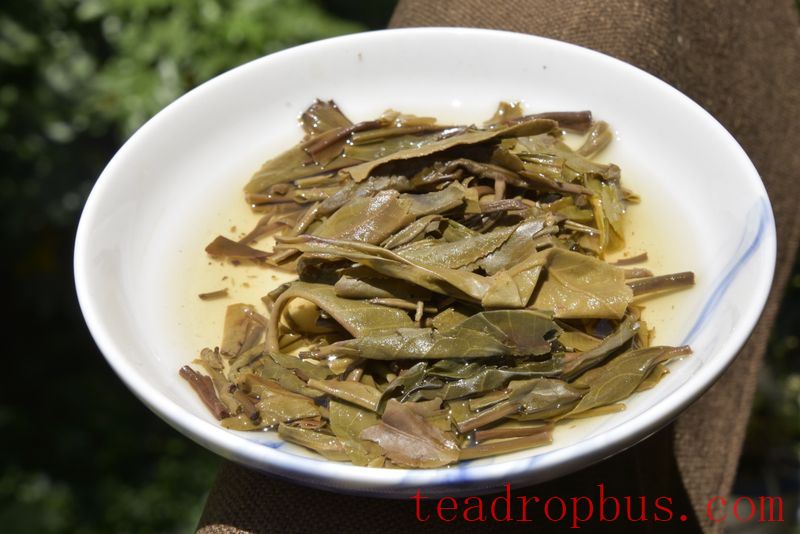New raw Pu'er Tea has a fresh appearance, mostly in yellowish green, with white down, and a strong flavor. Aged tea, due to long-term oxidation, appears jujube red, with the white down turning yellowish brown. Typically, the packaging paper of aged Pu'er tea becomes old over time, with a slightly yellowish color, so you can judge the age of the Pu'er tea from the aging degree of the paper, the handmade cloth texture, and the print color. Good tea has a very pure plant fragrance, the tea broth is bright red, and the tea leaves spread out naturally. On the contrary, if the tea broth is turbid or has off-flavors, it needs attention.

Tips for Selecting Raw Pu'er Tea
(1) Clearness
Smell its aroma: The aroma should be clear, without any musty odor.
No matter whether the Pu'er tea is raw or ripe, new or old, good or bad, shaped or not, expensive or cheap, you should first smell the tea. After decades of aging, there will certainly be an aged aroma, but there should be no musty odor.
(2) Purity
Distinguish its color: The color should resemble that of a jujube, pure, not black like lacquer. When Pu'er tea is stored under normal conditions, even after 30, 50, or even 100 years, the tea (broth) color won't turn black or develop strange flavors.

(3) Correctness
Store it properly: Store it in a dry warehouse. By “correct,” we mean neither too much nor too little, just right. After Pu'er tea has been made into its final product, the most important thing is the storage space and the length of time it is stored.
(4) Essence
Taste its broth: The aftertaste should be mild, not mixed with foreign tastes. Aged tea easily absorbs off-flavors, and the essence also represents the quality and authenticity of the tea itself, as shown by the environment, space, and time it has been stored over a long period.

When selecting a Pu'er tea, the basic quality standards are clearness, purity, correctness, and essence. More advanced levels of evaluation require tea enthusiasts to improve gradually through continuous tasting. Only through the accumulation of time and experience can one truly appreciate good tea, after all, haste makes waste when it comes to tea tasting.
To enjoy Pu'er tea, you must savor it while it's hot. Hold the Cup to your nose, and at this moment, you can feel the aged aroma surge forth like a spring, its elegant and heart-penetrating feeling surpassing that of delicate orchids and chrysanthemums. Pu'er tea requires careful tasting; sip it into your mouth to fully capture its true essence. Although the tea broth may initially taste slightly bitter and astringent, when you let it linger on your tongue for a moment, you can feel the tea broth seeping through your teeth, soaking into your gums, and generating a sweet and refreshing saliva from the root of your tongue that returns to your tongue surface. At this point, your mouth is filled with a fragrant Sweetness, and the saliva is produced, leaving you refreshed and invigorated. This is the best sensation when Drinking Tea—the “returning aftertaste.” It lingers long without thirst, a truly exquisite experience.